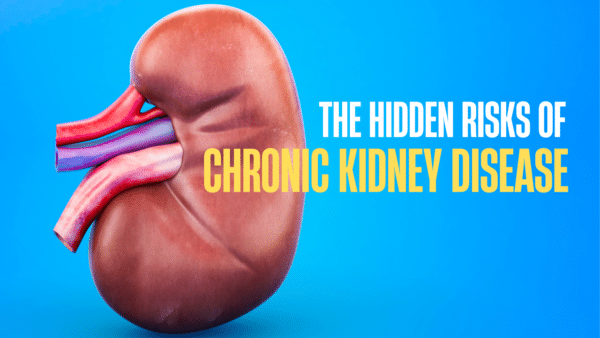Your body is pretty well equipped to fight inflammation. When you’re sick or get hurt, your body sends white blood cells to the rescue to fight whatever inflammation you are experiencing.
But sometimes the body’s natural healing stops working because your immune system becomes damaged by stress, poor diet, and weight gain. When the immune system is depressed, those healthy white blood cells go out looking for a problem to solve and end up attacking healthy tissue. This can lead to chronic inflammation.
Certain foods in our diet cause inflammation. But there are also foods that fight inflammation.
10 Anti-Inflammatory Foods You Should Be Eating Right Now
1. Tomatoes
Tomatoes are rich in lycopene, an anti-inflammatory nutrient that fights inflammation throughout the body. You would think that raw tomatoes would be the way to go but cooked tomatoes might be better for you because they provide more anti-inflammatory lycopene. Tomatoes are easy to incorporate into all your dishes so why not eat raw and cooked at the same meal.
Try anti-inflammatory food recipes like this RECIPE for 20 minute tomato soup.
2. Extra Virgin Olive Oil
Extra virgin olive oil should be at the top of your anti-inflammatory foods list because olive oil is rich in anti-inflammatory polyphenols. Plant based fats help reduce inflammation and olive oil’s fat is made up of 70% oleic acid. This monounsaturated fat fights inflammation and has been shown to work very similarly to ibuprofen.
You should be able to eat olive oil every day, drizzling it on any and all meals. Try this triple anti-inflammatory threat, olive tapenade RECIPE.
3. Bok Choy
Bok choy is an unusual looking vegetable in the cabbage family. Cruciferous vegetables like bok choy have sulforaphanes that help reduce inflammation by encouraging the liver to detoxify. Most anti-inflammatory foods contain antioxidants and bok choy has a special antioxidant called indole-3-carbinole. Research has shown that I3C operates on a genetic level to help prevent inflammatory responses at early stages of disease.
A bonus to bok choy is that it packs a powerful amount of vitamins and nutrients and only 20 calories per one shredded cup serving.
Try this crunchy slaw RECIPE with bok choy.
4. Walnuts
Of all the anti-inflammatory foods you should be eating, walnuts should be on the list.
The antioxidants in walnuts help fight off and repair damage caused by inflammation. It only takes about a 1/4 cup a day to see benefits. Ninety percent of the anti-inflammatory phenols in walnuts are in the skin, so be sure not to peel these nuts!
Walnuts go a step further with uniquely high levels of alpha linolenic acid an inflammatory busting omega 3 fat.
Try this RECIPE for this easy guacamole, walnut chicken salad.
5. Salmon
The most powerful natural anti-inflammatory foods contain omega 3 fatty acids and salmon is full of them. When it comes to omega 3’s you can eat, the one’s in fish, like salmon, are particularly good at improving inflammation and recommended for arthritis. Salmon’s omega 3’s may help relieve swelling and pain. They also prevent inflammation from starting. If you have concerns about mercury levels, salmon is lower in mercury than other fish, so it is safer to consume more often.
Anti-inflammatory recipes to the rescue! Try this fast and simple salmon RECIPE.
6. Blueberries
The flavonoids that give blueberries their color are also responsible for their anti-inflammatory benefits. It is those power packed anthocyanins that protect and prevent inflammation. Inflammation fighting foods like blueberries are best when eaten raw. It’s a good habit to get into adding them to your daily meals rather than rely on a blueberry muffin. And more good news, you can freeze fresh blueberries and they will retain those healthy anti-inflammatory benefits.
Use fresh blueberries in this delicious RECIPE for blueberry and yogurt ice pops.
7. Ginger
The ginger root is known for being anti-inflammatory and helpful with arthritic pain. Gingerol is a natural oil that gives the unique taste and smell to ginger as well as the powerful anti-inflammatory medicinal benefits.
Ginger can be eaten in many ways but ginger oil boasts great health benefits because it is highly concentrated and more powerful than the dry herb.
You can use this simple RECIPE for creamy ginger dressing every day.
8. Red Peppers
Bright colors in red peppers mean high antioxidants and less starch than you’d find in a light colored vegetable like white potatoes. Beta carotene is the stand out antioxidant in red bell peppers that gives those anti-inflammatory benefits. And the more you let red peppers ripen, the stronger the anti-inflammatory benefits you’ll get.
Try this fresh roasted red pepper and bonus anti-inflammatory walnut dip RECIPE.
9. Beets
Those deep, rich colored beets contain high levels of magnesium and potassium. Both minerals are great at fighting inflammation. Because beets also contain calcium, the anti-inflammatory magnesium and potassium minerals are more easily digested. Beets go one step further with betaine, a nutrient shown to protect cells, proteins and enzymes.
This RECIPE for beet hummus is the easiest and less messy way to prep and enjoy those healthy roots.
10. Dark Chocolate
When choosing your dark chocolate, go for a minimum of 70 percent cacao. Cacao is the healthy ingredient in chocolate that research has shown to help improve blood flow and blood pressure. Dark chocolate also contains heart healthy polyphenols, just like red wine and olive oil, that protect cells against damage from free radicals. Chocolate goes a step further in the stomach. Good microbes appear to attach to the chocolate in your belly and produce healthy anti-inflammatory compounds.
The best way to eat dark chocolate is to just pop it into your mouth. You can even make your own dark chocolate with this anti-inflammatory RECIPE.
Inflammation is the root cause for many diseases. And chronic inflammation from your diet can lead to diseases like arthritis. It’s important to incorporate anti inflammatory foods into your diet to combat inflammation but if you are experiencing chronic inflammation, you need to get tested to get to the bottom of the cause. Don’t let your symptoms go. Arthritis can’t be cured, but catching it early can make the long-term process of dealing with the disease much easier.





















